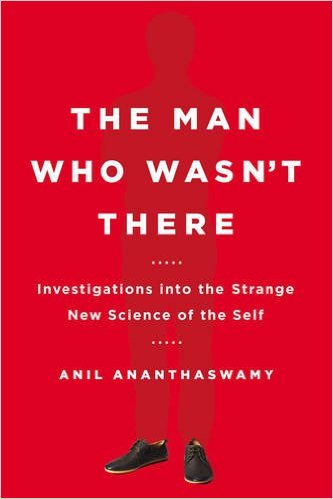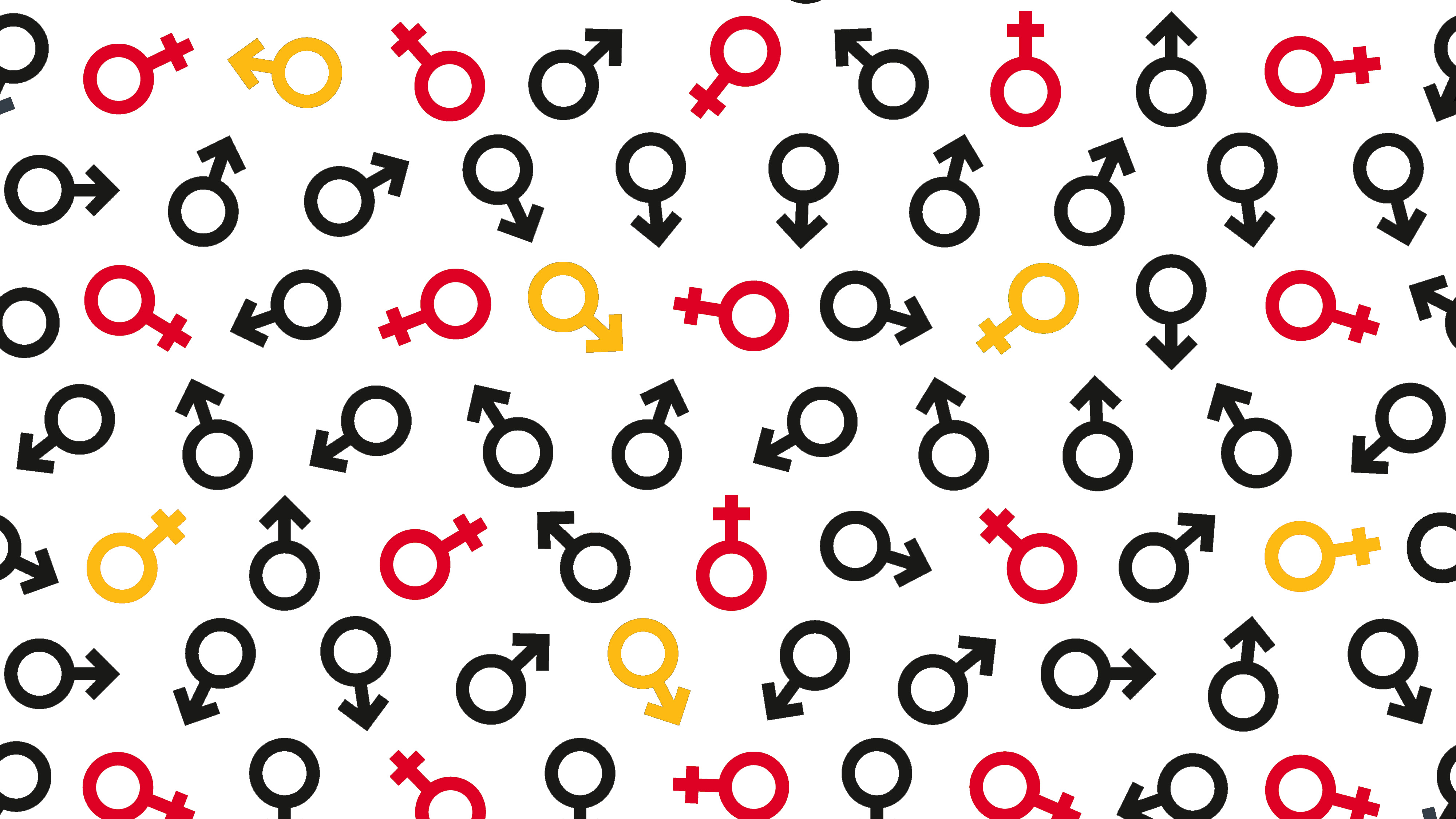Sandler grew up in the Western U.S. It was the mid-1990s, and Sandler was still a teenager. He had been assigned a female gender at birth and had not yet transitioned to being a man. Queer culture in Sandler’s hometown wasn’t quite as accepting as it is today, so at age 18, Sandler came out as a lesbian. “That was what made sense to me without an awareness of other options,” he told me almost 20 years later, as we talked in a noisy café in a university town in the Northeast. Sandler is not his real name. While he’s living his life with openness, he requested anonymity in this publication.

WHAT I LEFT OUT is a recurring feature in which book authors are invited to share anecdotes and narratives that, for whatever reason, did not make it into their final manuscripts. In this installment, writer Anil Ananthaswamy shares a story that didn’t make it into his book, “The Man Who Wasn’t There.”
If the pronouns I used above, and those that I use throughout this piece, appear confusing, imagine the inner life of someone living that confusion while grappling with probably the most basic of issues concerning one’s identity: that of gender. I had been talking to Sandler for barely five minutes when he remarked, “This aspect of my self and who I am is [as] impenetrable for cognitive processes as anything I have come across. Finding ways to explain it is extremely difficult. And it’s also one of the deepest and most profound experiences of self, of awakening.”
Issues of gender identity and certain neuropsychological conditions such as schizophrenia, Alzheimer’s and ecstatic epilepsy shake the very foundations of our being, and these disturbances of our sense of self can help us understand how the brain creates the unified experience of being someone. This is not to suggest that gender identity is a neuropsychological condition. But certainly the perturbations of the self — whatever their basis — can elucidate the nature of the self.
Take schizophrenia. Despite the complex constellation of symptoms, neuroscientists and psychologists have identified disturbances of at least one distinct aspect of our being that underlies schizophrenia: the sense of agency. This is the part of our sense of self that makes us feel like we are agents of our actions. Imagine picking up a glass of water. The feeling that “I did that” is implicit in the action. Imagine now, doing the same action, but without the accompanying feeling of agency. That’s something people with schizophrenia often confront. So by understanding the phenomenology of the condition, or its lived experience (the feeling of what it’s like to have a disturbed sense of agency), and the neurocognitive mechanisms that are responsible for this disruption, one can tease apart and illuminate this key aspect of our sense of self.
The most confounding thing about our sense of self is the “I”, the subject of experiences. For a moment, pay attention to your being. You are likely aware of your own body: the bodily self, which includes an implicit sense that the body belongs to you, a sense that your body occupies a certain volume of space, and a sense that you are looking out at the world from behind your eyes. The key thing here is that there is an “I” experiencing the bodily self.
Many philosophers have argued that the sense of self can be divided into two categories: the “I” — the self-as-subject — and everything else that the “I” experiences. This latter category makes up the self-as-object. To take an example, if you were to say “I feel happy,” then the feeling of happiness is the self-as-object being experienced by the “I”, the self-as-subject. Or, consider the feeling of looking at your arm and saying, “This is my arm.” The “I” is the subject of an experience, the experience being the feeling that the arm belongs to you. The latter feeling is still part of your sense of self, but it belongs in the self-as-object category.
The really hard question is explaining how the “I” arises. Some philosophers have argued that the “I” is the outcome of having a sense of agency. Schizophrenia shows that this is clearly not the case. The “I” can experience either a sense of agency or a lack thereof.
Similarly, because of the loss of short-term memory and impaired cognition, Alzheimer’s disease impacts a person’s narrative self, which is the story we tell ourselves or others about who we are. The sufferer’s narrative begins to get scrambled. Still, the “I,” the self-as-subject, remains intact, at least into the middle stages of the disease, even as it’s experiencing a crumbling narrative.
Sometimes, the bodily self, which we take for granted, can also go awry. Consider a condition called body integrity identity disorder. There’s an integrity to the way our body and its various parts feel to each to us. Key to this is the sense of ownership: My leg or my arm — or for that matter, any part of my body — feels like it’s mine. The claim is so obvious that the need to state it seems absurd. Yet those suffering from BIID will insist that some part of their body, usually an arm or a leg, doesn’t belong to them, and in extreme cases will seek to amputate it. BIID sheds light on the neurocognitive mechanisms that give rise to a sense of ownership of body parts or the lack of it and distinguish the sense of body ownership from the “I.”
Can we think similarly about gender identity? Sandler has, in part because his struggles with gender identity were strongly physical. After suffering years of bodily pain and deep-seated feelings about a body that felt unhealthy, Sandler thought that one way to address the pain and discomfort was to become pregnant, a notion influenced by strong cultural messages that having a baby is a powerful, womanly act.
“I was very, very driven to be pregnant,” Sandler told me. “A huge part of my motivation — some of this I voiced at the time, some of it is clear in retrospect — was that I needed to fix my body, that there was something broken, something wasn’t right. I needed to do something really, really powerful in order to make things right.”
By then, Sandler was married. The couple decided to go ahead with the pregnancy. Sandler gave birth after an extremely difficult pregnancy. However, his physical unrest only increased. “The bottom kind of dropped out,” he told me. “It all got worse instead of better.”
That catalyzed a profound change. But it was not as if the realization was immediate. Rather, the change was gradual. “I had this persistent feeling of unrest,” recalled Sandler. “It was kind of a self pushing outward, like there was sort of a crack and [it was] starting to seep out, and then, gradually, come into conscious awareness, even more conscious awareness, and then cognitive awareness of actions I could take [to] actually physically alter my body in ways that would alleviate a lot of that distress.”
Sandler began transitioning, getting counseling, taking hormone therapy, and then undergoing top surgery, the term used for mastectomy and chest reconstruction. “There will probably be future surgical steps, but that’s all stuff I’m figuring out as we go along,” Sandler said.
As I listened to Sandler, and later looked further into the issue of gender identity, it became clear that it isn’t clear cut. The mechanisms that underlie our experienced gender — one can think of it as constituting the self-as-object — are not easy to disentangle. Some have argued that gender is a purely a product of how we are socialized. There’s plenty of research that suggests that we learn to be masculine or feminine through interactions with our families and early, intimate social structures, and adopt traditional gender identities.
Others, however, have taken the opposite position, arguing for an innate, biological basis for gender, whether it is, for example, physiological, neuroanatomical or hormonal.
Sandler’s story illustrates some of this complexity, although he identified more with the latter biological characterization. “My experience of being male, my experience of gender, of trans-ness, is very much tied to my body,” he said. “My experience is a little more physical than some other people’s. For some people it’s a little more social, and for some people it shifts over time.”
We perceive our mind and body to be distinct (as did 17th century philosopher René Descartes), but many contemporary philosophers and neuroscientists believe it’s a false dichotomy. So, if for some people their experienced gender is the outcome of social interactions and perceptions, it appears as though their mind is the primary influence. For others, like Sandler, the role of the body is primary. I’m convinced this seeming division is false, although again, that remains a complicated case to make in a book chapter — and perhaps even in a book.
But there is one other part of this story that should be told here. There was another person in Sandler’s life — his wife — who was likely confronting challenges to her own identity and sense of self with Sandler’s ongoing transition. He never hid his feelings from his wife.
Soon after giving birth, he told her, “If I were younger, things might have been different. I think I might have been trans.” Initially, they brushed off his words, but when Sandler fully understood the depth and urgency of his own feelings, his wife was fully supportive, likening him to a good book that they had been trying to read in the dark, when suddenly someone turned on the lights, and “everything was bright and shocking and a little overwhelming but so much better.” Sandler knows it could have been very different. “I have been very lucky in that … my family, we are stronger than we were before,” he said.
Anil Ananthaswamy is a science writer focusing on physics, neuroscience and climate change. He is a consultant for New Scientist Magazine and author of two books: “The Man Who Wasn’t There” and “The Edge of Physics.” He has also written for National Geographic, Discover and Matter.










